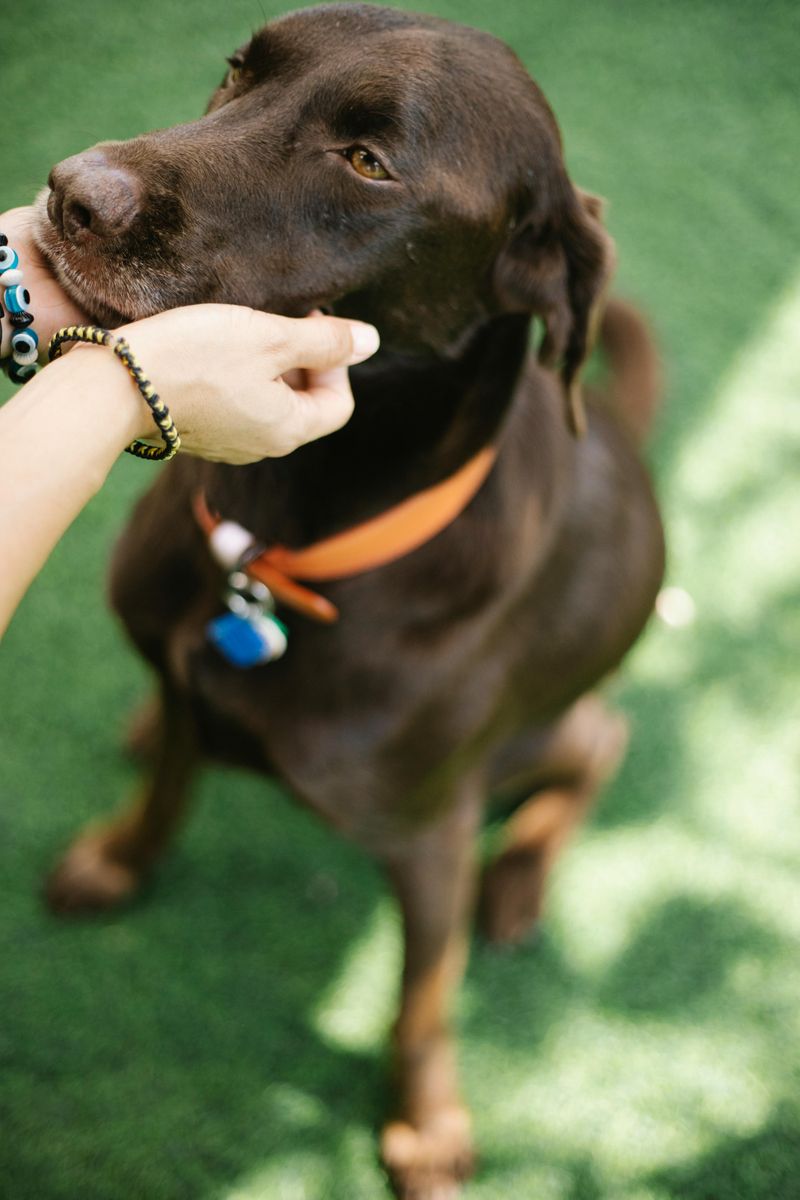📖 Table of Content:
Dogs possess an extraordinary sense of smell, enabling them to detect a wide range of diseases in humans. Studies have shown that they can identify various medical conditions by picking up on specific scents released by the body. We’ll explore 15 diseases that dogs can potentially detect, shedding light on the incredible abilities of our canine companions.
Their olfactory capabilities often exceed those of medical technology, making dogs invaluable allies in healthcare. From detecting cancer to monitoring blood sugar levels, dogs’ ability to sense changes in the body can help with early diagnosis and treatment. By leveraging their natural talents, dogs are becoming essential partners in the field of medical diagnostics.
As we uncover how dogs can detect these conditions, we gain a deeper appreciation for their extraordinary skills. Their intuitive abilities not only improve human health but also highlight the special bond between humans and dogs. Let’s dive into the world of canine detection and see how these loyal animals are transforming healthcare.
1. Cancer
Dogs can detect cancer, including lung, breast, and prostate, by sniffing volatile organic compounds (VOCs) released by tumors. This ability has been leveraged in experimental setups, with trained dogs identifying cancer in breath, urine, or skin samples.
Their accuracy often rivals that of modern medical technologies, offering an accessible diagnostic tool. In clinical settings, these canine detectives have provided hope for early detection and treatment.
Such olfactory capabilities underscore the unique partnership between humans and dogs in healthcare. Training programs continue to explore and expand this potential.
2. Diabetes
Trained to detect changes in blood sugar levels through scent, diabetes-alert dogs can identify the presence of ketones. These are found in the breath of people with high blood sugar.
These dogs provide vital support by alerting their owners to dangerous glucose fluctuations, often before any medical device. Their keen sense of smell is a lifesaving tool, particularly for individuals with type 1 diabetes.
Such partnerships not only enhance safety but also empower individuals to manage their condition with confidence and independence.
3. Epilepsy
Subtle scent changes or behavioral cues are detected by dogs before an epileptic episode. While the exact cause isn’t fully understood, they often sense a seizure minutes in advance.
Their alerts, which may include barking or pawing, allow individuals with epilepsy to seek safety or medication in time. This proactive assistance improves the quality of life for those prone to seizures.
The bond between seizure-alert dogs and their handlers exemplifies the profound impact dogs have on health and well-being.
4. Malaria
Research has shown that dogs can be trained to identify malaria through scent. They detect specific odor profiles associated with the disease, even in asymptomatic individuals.
This discovery offers a non-invasive diagnostic approach, particularly in regions with limited access to medical facilities. By identifying infected individuals early, dogs can help control outbreaks and reduce transmission.
Their ability to detect malaria highlights the innovative use of canine olfaction in global health initiatives, offering hope for improved disease management.
5. Parkinson’s Disease
These animals have shown potential in identifying Parkinson’s disease by sniffing changes in skin odor. This capability is particularly promising for early diagnosis, as scent changes may occur before visible symptoms.
The unique scent profile associated with Parkinson’s offers an opportunity for early intervention and management. While still in the experimental stages, this application of canine scent detection could revolutionize how we approach neurodegenerative disorders.
It underscores the incredible potential dogs have in contributing to medical science and improving patient outcomes.
6. COVID-19
Trained dogs have successfully identified COVID-19 in humans by detecting volatile organic compounds specific to the virus. Their accuracy in distinguishing infected individuals is remarkable, even in asymptomatic cases.
Airports and public events have employed these dogs as part of screening measures, offering a rapid, non-invasive method to curb virus spread. This innovative use of canine scent detection has proven effective in supplementing traditional testing methods.
Such collaborations between dogs and humans highlight the adaptability and value of canine abilities in public health.
7. Tuberculosis
The ability to detect tuberculosis (TB) through scent has been demonstrated by dogs, identifying the disease in sputum or breath samples. This method provides a quick and accurate alternative to traditional TB tests.
In regions with high TB prevalence, canine detection provides a vital tool for early diagnosis and treatment. The dogs’ remarkable accuracy and speed enhance efforts to control and manage the disease.
This application of olfactory detection underscores the potential of dogs in addressing global health challenges and supporting medical advancements.
8. Migraine
Changes in body chemistry are detectable by some dogs, allowing them to sense the onset of migraines in their owners. These subtle scent changes can signal an impending attack, giving sufferers the chance to take preemptive action.
By alerting their human companions early, these dogs offer relief and support during debilitating episodes. The comfort and companionship provided by these canine friends can significantly improve the quality of life for migraine sufferers.
This unique skill illustrates the deep connection between dogs and humans, enhancing well-being and companionship.
9. Bacterial Infections
Dogs have been trained to sniff out bacterial infections, including those caused by MRSA, a dangerous antibiotic-resistant bacteria. By detecting specific scent profiles, they provide an early warning system for potential outbreaks.
Their ability to identify bacterial infections is particularly valuable in healthcare settings, where prompt detection can prevent the spread of disease. This skill emphasizes the role of dogs in maintaining public health and safety.
Their contribution to infection control showcases the innovative applications of canine scent detection in medical environments.
10. C. difficile Infection
Clostridium difficile (C. diff), a challenging bacterial infection in healthcare settings, can also be identified by dogs. By detecting its unique scent, they play a crucial role in controlling infection outbreaks.
Early detection by dogs allows for timely intervention, reducing transmission and improving patient outcomes. Their efficiency in identifying C. diff highlights their potential role in enhancing hygiene and safety in medical facilities.
This capability demonstrates the diverse applications of canine olfaction, contributing to better healthcare practices and infection management.
11. Prostate Cancer
Through scent detection, dogs have shown promising results in identifying prostate cancer from urine samples. This non-invasive method offers an innovative approach to early diagnosis.
Their accuracy and reliability provide a complementary tool to traditional screening methods, potentially improving early detection rates. This ability reflects the sophisticated olfactory capabilities of dogs in identifying specific cancer markers.
These advancements in canine scent training contribute to earlier interventions and better patient care, highlighting the transformative role of dogs in modern medicine.
12. Bladder Cancer
Bladder cancer can be detected by dogs through the scent of urine samples. This remarkable ability offers a promising approach for early, non-invasive screening.
Their high success rate in identifying bladder cancer underscores the potential applications of canine olfaction in oncology. This capability provides an alternative to traditional diagnostic methods, enhancing early intervention opportunities.
The continued exploration of this skill may lead to significant advancements in cancer detection and treatment, benefiting both patients and healthcare providers.
13. Lyme Disease
By recognizing specific scent markers, dogs can detect Lyme disease. This skill is particularly useful in outdoor environments, where the disease is commonly found.
By identifying the presence of Lyme disease early, dogs contribute to prompt treatment and management of symptoms, reducing long-term health impacts. Their role in detecting tick-borne illnesses highlights their importance in public health.
This application showcases the versatility of canine scent detection, offering valuable support in disease prevention and management.
14. Bowel Cancer
Dogs have shown the potential to detect bowel cancer by sniffing stool samples, and identifying specific scent compounds associated with the disease.
This innovative method offers a non-invasive alternative for early detection, improving survival rates for patients. Their success in identifying bowel cancer reflects the advanced capabilities of canine olfactory systems.
As research progresses, this approach may become an integral part of cancer screening protocols, enhancing early diagnosis and treatment strategies.
15. Stress-Related Disorders
Changes in cortisol levels, linked to stress, can be detected by dogs through scent. This ability allows them to offer comfort and support to individuals experiencing anxiety or stress.
Their intuitive nature and companionship offer therapeutic benefits, enhancing emotional well-being. By recognizing stress cues, dogs help individuals manage their mental health effectively.
This skill highlights the emotional bond between dogs and humans, promoting mental health awareness and support in everyday life.















